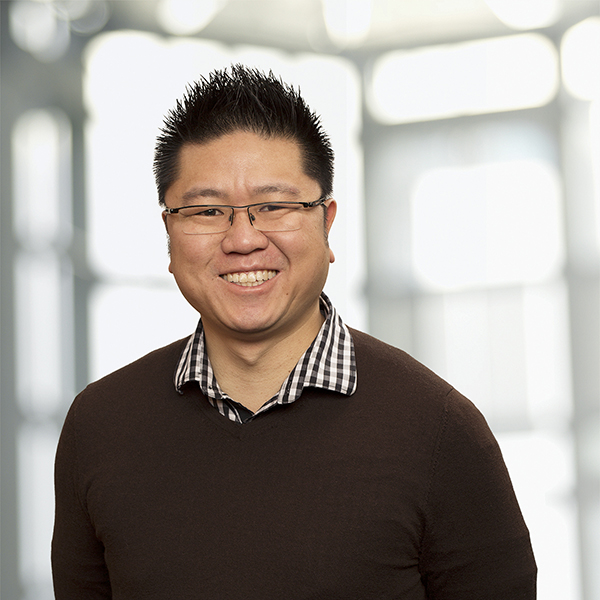RESEARCH OVERVIEW
They say big things come in small packages. When it comes to nanomedicine, I believe big things will develop from some very, very small packages.
Being in the open, interdisciplinary environment of the Donnelly Centre has been ideal for my work. I’m able to interact with other scientists in other disciplines whose expertise brings a whole new dimension to my investigations. At the same time, the technologies developed in my lab will benefit researchers in systems and molecular biology. For example, we have been working with my colleague Dr. Jason Moffat on identifying the receptors involved with nanoparticle cell uptake, which will important in designing nanotechnologies to deliver drugs to cancer sites with high therapeutic effectiveness and reduced side effects.We are converging nanotechnology with medicine to create the next generation of diagnostic and therapeutic technology. We develop medical technologies using materials that are between the size of an atom to the bulk material, in the 1 to 100 nanometre range. A nanometre is one billionth of a metre. How small is that? One hundred nanometres is 10000 times smaller than the diameter of a hair! Materials this tiny are useful in biomedical applications such as detecting molecules in blood or tumors. Many of the nanomaterials developed in the lab have already moved to commercial settings and we expect this technology will reach the clinical setting in the near future, and that means doctors will be able to use these miniscule structures in diagnosing disease or prescribing drugs. That will mean faster results and improved accuracy in diagnosis. Eventually, these nanotechnologies will be commonly used in drug delivery, therapies and diagnostics.
SCIENTIFIC RESEARCH OVERVIEW
Materials or particles smaller than 100 nm in size and shape have optical, electrical, magnetic and biological properties that are related to their size, shape, and surface chemistry. The last thirty years have seen significant improvements in the design, synthesis, and characterization of nanomaterials. These nanomaterials are currently used as building blocks in the design of new electronics, displays, solar cells, tools for biological research and medical devices. My research program aims to develop these nanomaterials for biological applications. My lab is organized into three research themes:
- Nanoparticle synthesis and characterization
- Understanding nanoparticle-biological interactions
- Design of nanomaterials for biological applications.
SELECT PUBLICATIONS
- Surveilling and Tracking COVID-19 Patients Using a Portable Quantum Dot Smartphone Device. Y. Zhang, et al., Nano Letters, 2021, 21, 5209.
- The dose threshold for nanoparticle tumour delivery. B. Ouyang et al., Nature Materials, 2020, 19, 1362.
- DNA-Controlled Encapsulation of Small Molecules in Protein Nanoparticles. W. Ngo et al., Journal of American Chemical Society, 2020, 142, 17938.
See the rest of our publications
WARREN CHAN

Professor Warren Chan joined the University of Toronto’s Institute of Biomaterials & Biomedical Engineering (IBBME) in 2002, was promoted to associate professor in 2008 and to full professor in 2012. In 2024, he left the University of Toronto to become the Dean of the College of Engineering and the President’s Chair Professor at Nanyang Technological University in Singapore.
He is currently a Distinguished Professor of Nanobioengineering, where he is developing nanotechnology for the diagnosis and treatment of cancer and infectious diseases. He has been the recipient of the Kabiller International Nanomedicine Award (2015), NSERC E.W. Steacie Fellowship (2012), as well as a Canada Research Chair in Bionanoengineering from 2006-2016. He has previously served as the collaborative program director (2008-2011) in the Institute of Biomedical Engineering (BME) and is currently an associate editor of ACS Nano.
Main Appointments